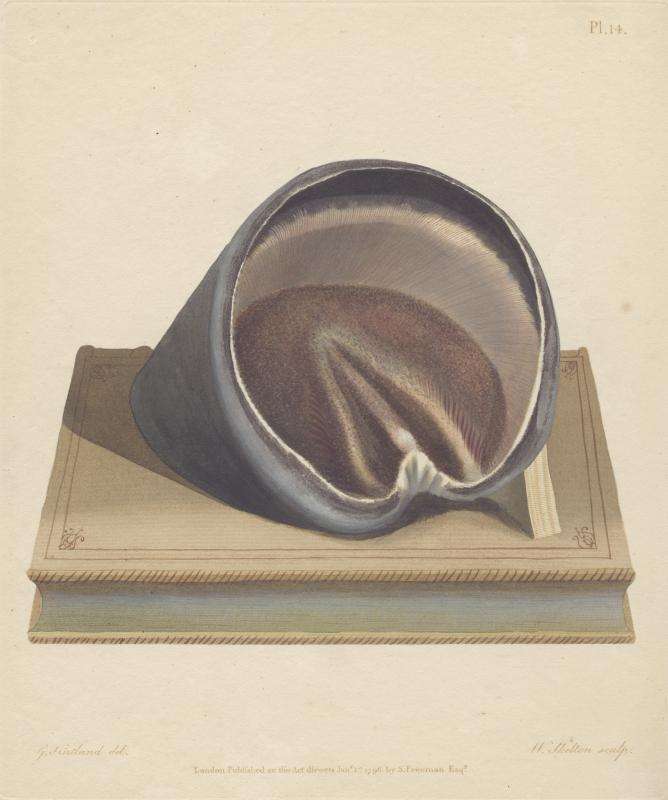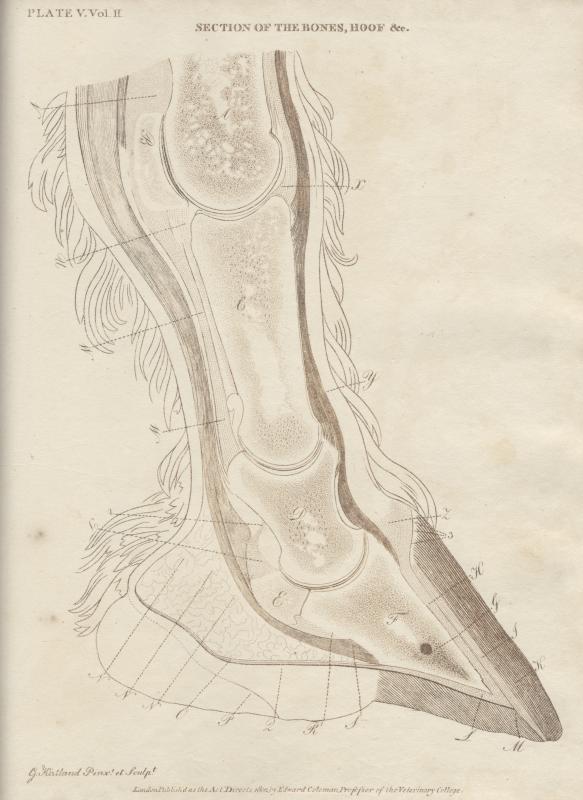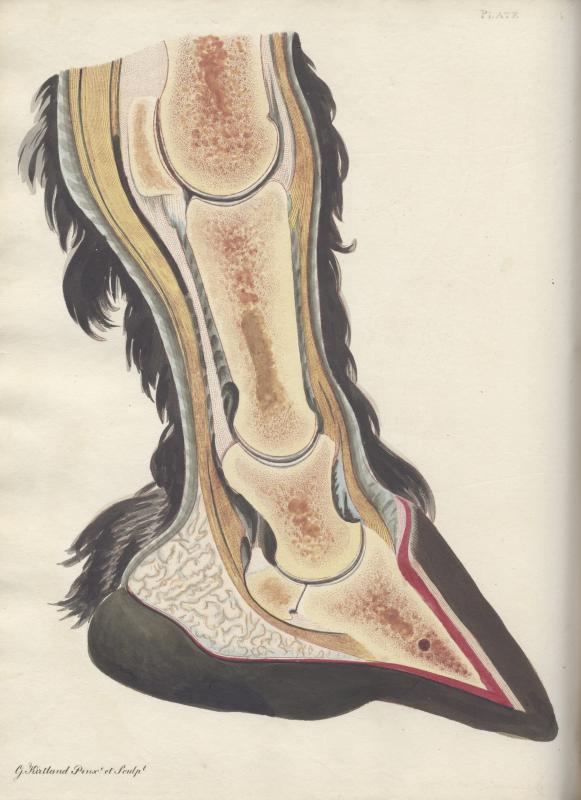The Importance of Foot Health
Until the establishment of a formal education system for veterinarians, much of the care of horses fell to farriers. Farriers combined the skills of a blacksmith with those of a veterinarian and were not only trained how to shoe horses, but also how to administer various home remedies and treatments for lameness and other medical problems. Farriers were expected to have a good understanding of the anatomy of an equine foot.
Many of the works published by farriers were often designed as pocket manuals, small and easy to transport as the farrier traveled from farm to farm. In addition to images and descriptions of treatments they often included recipes for the farrier's own secret cures.
- Observations on the mechanism of the horse's foot, Strickland Freeman, 1796
- The plates in this book were drawn and engraved by George Kirtland. Each full-color plate is accompanied by a line sketch and explanation of the image.
- Observations on the structure, oeconomy, and disease of the foot of the horse, and on the principles and practice of shoeing, Edward Coleman, 1798
- Edward Coleman was Professor of the Veterinary College in London from 1794 to 1839. The plates were by George Kirtland, who also drew and engraved the plates for Strickland Freeman's Observations on the Mechanism of the Horse's Foot.
- The farrier's new guide, William Gibson, 1720
- William Gibson became known as the father of British veterinary medicine and a "careful clinical observer who added to the sum of human knowledge". Part 1 of The Farrier's New Guide, published just after he left the army, is copied verbatim from Andrew Snape's Anatomy of an Horse.






